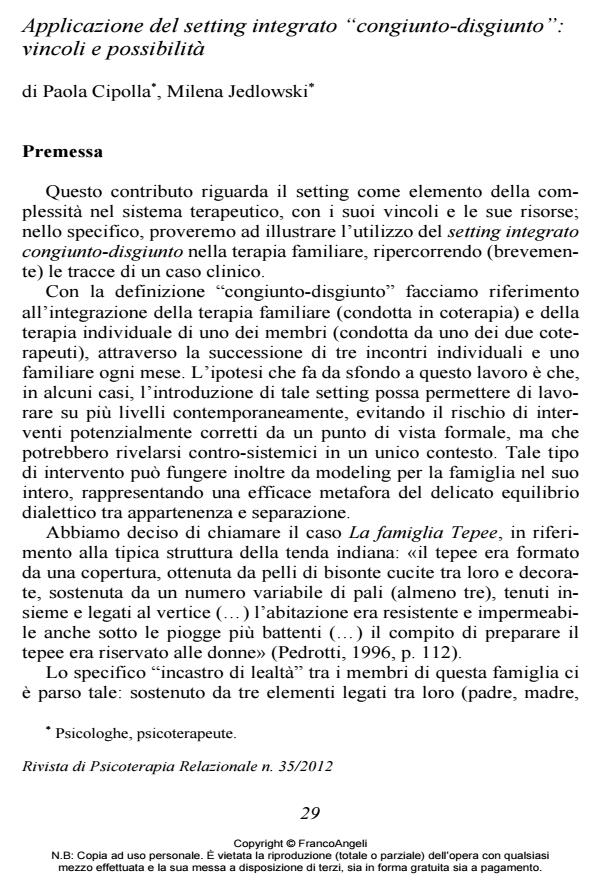Application of integrated setting "joint-disjoint": constraints and opportunities
Journal title RIVISTA DI PSICOTERAPIA RELAZIONALE
Author/s Cipolla Paola, Milena Jedlowski
Publishing Year 2012 Issue 2012/35
Language Italian Pages 16 P. 29-44 File size 430 KB
DOI 10.3280/PR2012-035003
DOI is like a bar code for intellectual property: to have more infomation
click here
Below, you can see the article first page
If you want to buy this article in PDF format, you can do it, following the instructions to buy download credits

FrancoAngeli is member of Publishers International Linking Association, Inc (PILA), a not-for-profit association which run the CrossRef service enabling links to and from online scholarly content.
After a brief analysis of the setting as an element of complexity in the therapeutic system, the authors intend to demonstrate - through the reading of a clinical case - the potentiality and risks of introducing a form of joint-disjoint integrated setting. The hypothesis that is at the background of the contribution is that, in some cases, the introduction of this setting can allow to work on multiple levels simultaneously, avoiding the risk of potentially correct interventions under a formal point of view, but that might be against-systemic in a single context. Specific "joints of loyalty" may represent a constraint to the definition of a unique setting, both at a family and individual level, which could make it difficult to take into account the complexity of the levels involved. But precisely the recognition of this constraint can become an opportunity to define an integrated setting, becoming a resource to start a therapeutic process that can meet the complexity of the developmental needs of individuals and of the system and encourage the dialectic between belonging and identification.
Keywords: Setting, joint-disjoint, loyalty, adolescence, junction.
Cipolla Paola, Milena Jedlowski, Applicazione del setting integrato "congiunto-disgiunto": vincoli e possibilità in "RIVISTA DI PSICOTERAPIA RELAZIONALE " 35/2012, pp 29-44, DOI: 10.3280/PR2012-035003